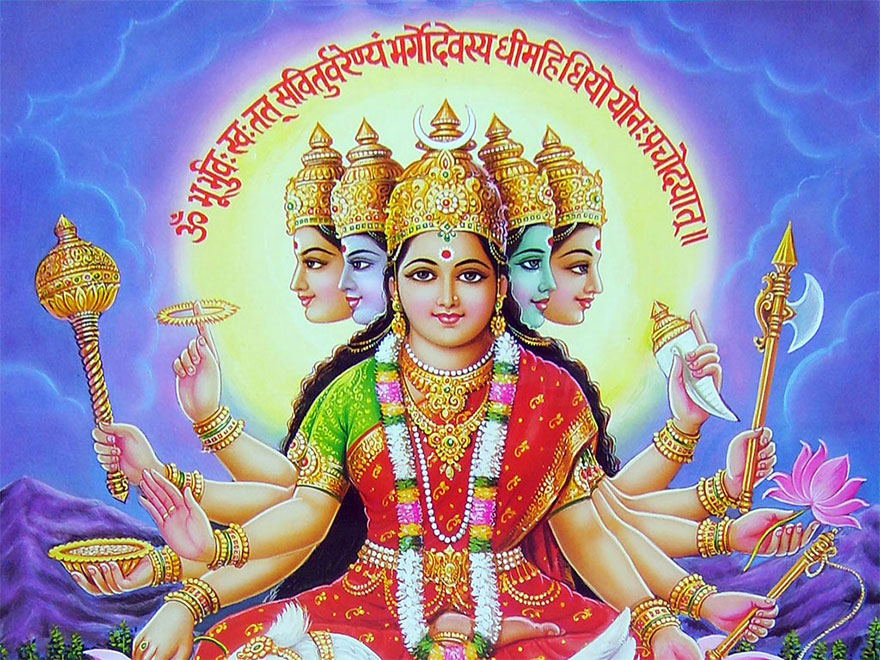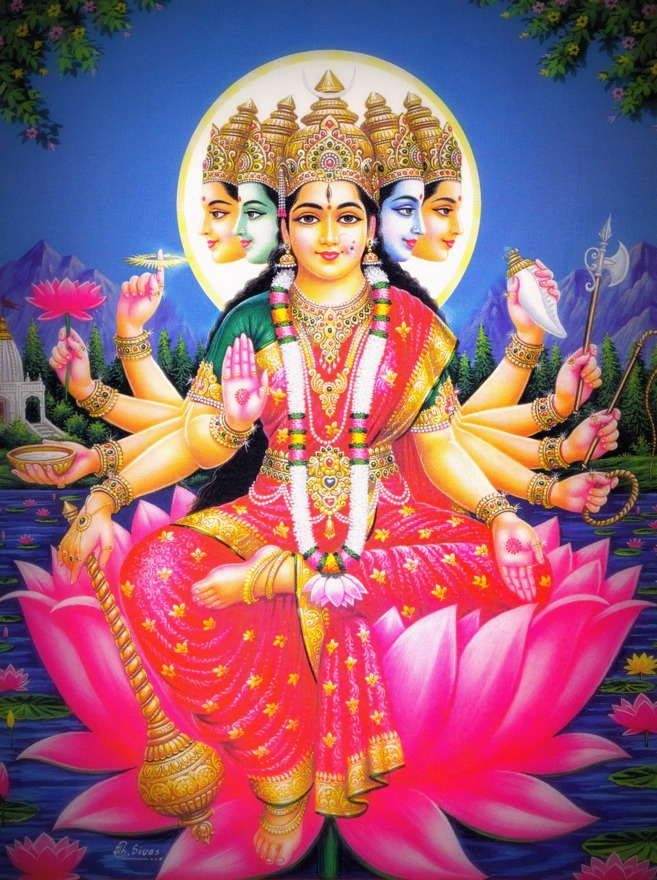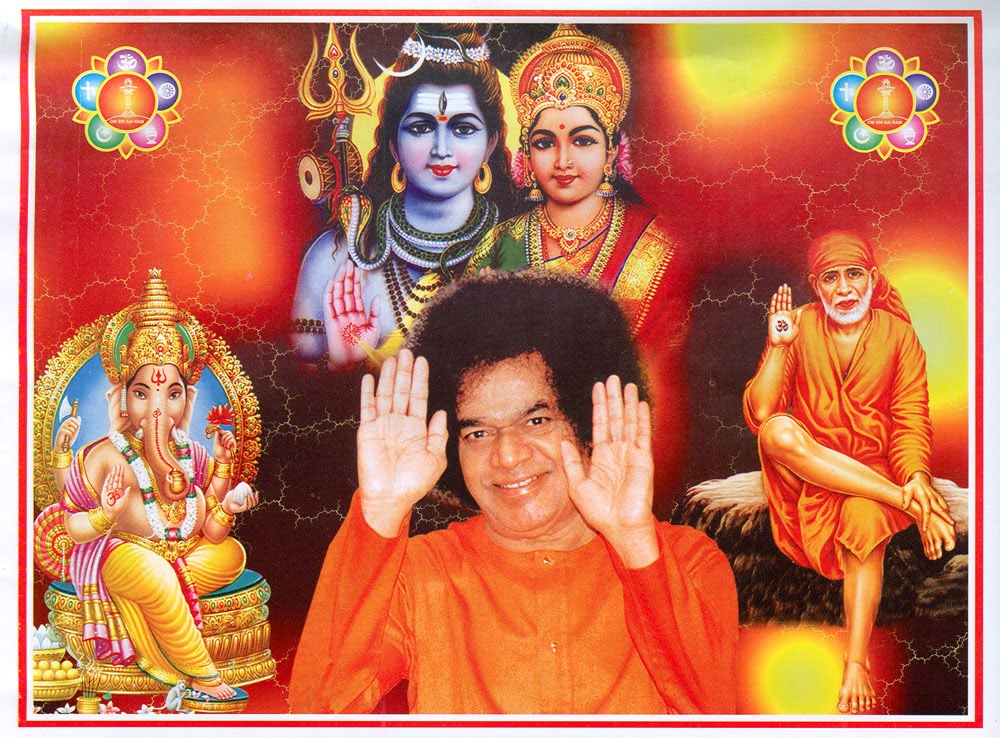Revelando el secreto detrás de Gayatri Mantra
El mantra Gayatri es un verso de 6.000 años de edad, recitado por millones de hindúes cada día en todo el mundo. Este mantra - Rig Veda Samhita 3.62.10 - fue compuesta por el sabio Vishwamitra. Compuso la mayor parte de los poemas en la tercera sección del Rigveda.
Este verso se llama el mantra Gayatri posiblemente porque está compuesto en la métrica poética llamada Gayatri. Un verso escrito en esta métrica poética debe tener tres líneas y cada línea debe tener ocho sílabas. Es interesante observar que la etimología de la palabra Gayatri es gāyantaṃ Trayate ITI gāyatrī, "Gayatri es la que protege a la persona que lo recita."
Por lo tanto, aunque hay miles de versos compuestos en el medidor Gayatri, cuando decimos Gayatri mantra, específicamente denota este verso:
tat saviturvareṇyam |
bhargo devasya dhīmahi |
dhiyo yo naḥ pracodayāt ||
En sánscrito, cada palabra tiene varios significados. Así que es importante para nosotros entender el contexto en el que se utiliza una determinada palabra. Vamos a echar un vistazo a lo que significa cada palabra en este mantra:
tat = de
savituḥ = sol; literalley "que permite", "uno que estimula", "el que da vida"
varenyam = mejor, excelente, digno del mayor respeto
bhargaḥ = light, lustre, radiance
devasya = de dios, del señor, de la deidad
dhīmahi = (nos) meditar, contemplar
dhiyaḥ = intelecto, la sabiduría, la mente, la conciencia
yaḥ = el que, el que
naḥ = a nosotros, por nosotros
pracodayãt = (quien) inspira, motiva, estimula, da poder
(Un observador se encuentra que la primera línea sólo tiene siete sílabas en lugar de ocho: tat-sa-vi-tu-RVA-re-Nyam, por lo tanto, mientras que la recitación, se añade la sílaba om en el principio o digamos tat-sa -VI-tu-RVA-re-Ni-yam).
Vamos a tratar de arreglar esto en la forma de una oración. Uno que (yaḥ) estimula (pracodayãt) nuestra (NAH) mente (dhiyaḥ) - meditamos (dhīmahi) en la que (TAT) excelente (varenyam) luminosidad (bhargaḥ) del señor (devasya), el sol (savituḥ).
Un simple traducción Inglés nos daría:
Meditamos en
el maravilloso resplandor del dios del sol,
que estimula nuestra mente.
El mismo mantra Gayatri también aparece en el Yajurveda pero con una línea adicional en el principio:
om bhūrbhuvassuvaḥ |
om = la palabra de una sola sílaba que representa Brahman, el Ser Supremo
bhūḥ = tierra
bhuvaḥ = atmósfera
Suvah = cielo, el cielo
Con esta línea, traemos nuestra conciencia a las tres esferas de la existencia, conectando así con algo más grande que nuestros pequeños seres.
En la tradición hindú, creemos que sólo hay un Ser Supremo (Brahman), pero hay varios dioses. Estos dioses se pueden realizar en cualquier forma.
Las fuerzas de la naturaleza - viento, rayos, truenos, el fuego - se deificados. Los seres animados e inanimados - animales, plantas, ríos, montañas - se deificados. Los objetos celestes - sol, luna, planetas, estrellas - están deificados. También podemos ver a Dios en una escultura, una pintura, o incluso en una canción.
Entre todas estas diferentes posibilidades, el sol es el más magnífico. Por supuesto, un astrofísico podría decirnos que el sol en nuestro sistema solar es un verdadero enano frente a algunas de las otras estrellas en el universo. Aun así, el sol sigue siendo el objeto más brillante que podemos ver con nuestros propios ojos. No sólo lo vemos, pero también sentimos su presencia. Se elimina la oscuridad y trae la luz. Se elimina el frío y trae calor. El resplandor de la Suprema representa el conocimiento (que elimina la oscuridad de la ignorancia) y vitalidad (que elimina la frialdad de letargo).
Por lo que el Gayatri mantra es una oración al Supremo, en forma de sol, lo que estimula nuestra mente y nos da poder. Al igual que el sol nos despierta cada mañana, oramos para que la luz Supremo despierta nuestro intelecto. De hecho, es una oración para la fuerza interna.
En la serie de dibujos animados de 1990 Capitán Planeta, hay un hermoso simbolismo para esto - cada vez que el Capitán Planeta se encuentra al borde de la derrota, que extrae energía del sol. Él se revitaliza. Él está listo para enfrentarse a sus enemigos - los que tratan de contaminar la tierra. El mantra Gayatri hace algo similar, pero dentro.![]()
Revealing the Secret Behind Gayatri Mantra
The Gayatri mantra is a 6,000-year-old verse recited by millions of Hindus every day all over the world. This mantra – Rigveda Samhita 3.62.10 – was composed by sage Vishwamitra. He composed most of the poems in the third section of the Rigveda.
This verse is called the Gayatri mantra possibly because it is composed in the poetic meter called Gayatri. A verse written in this poetic meter should have three lines and each line must have eight syllables. It is interesting to note that the etymology of the word Gayatri is gāyantaṃ trāyate iti gāyatrī, "Gayatri is that which protects the person who recites it."
Therefore, although there are thousands of verses composed in the Gayatri metre, when we say Gayatri mantra, it specifically denotes this verse:
tat saviturvareṇyam |
bhargo devasya dhīmahi |
dhiyo yo naḥ pracodayāt ||
In Sanskrit, every word has several meanings. So it's important for us to understand the context in which a certain word is used. Let us take a look at what each word in this mantra means:
tat = that
savituḥ = the sun; literalley "one who permits", "one who stimulates", "one who vivifies"
vareṇyam = best, excellent, worthy of the highest respect
bhargaḥ = light, lustre, radiance
devasya = of god, of the lord, of the deity
dhīmahi = (we) meditate, contemplate
dhiyaḥ = intellect, wisdom, mind, consciousness
yaḥ = the one who, he who
naḥ = to us, for us
pracodayāt = (one who) inspires, motivates, stimulates, empowers
(An astute observer will find that the first line has only seven syllables instead of eight: tat-sa-vi-tu-rva-re-ṇyam; therefore while recitation, we add the syllable om in the beginning or we say tat-sa-vi-tu-rva-re-ṇi-yam).
Let us try to arrange this in the form of a sentence. One who (yaḥ) stimulates (pracodayāt) our (naḥ) mind (dhiyaḥ) – we meditate (dhīmahi) on that (tat) excellent (vareṇyaṃ) radiance (bhargaḥ) of the lord (devasya), the sun (savituḥ).
A simple English translation would give us:
We meditate on
the wonderful radiance of the sun god,
who stimulates our mind.
The same Gayatri mantra also appears in the Yajurveda but with an additional line in the beginning:
oṃ bhūrbhuvassuvaḥ |
om = the single-syllable word that represents brahman, the Supreme Being
bhūḥ = earth
bhuvaḥ = atmosphere
suvaḥ = sky, heaven
With this line, we bring our awareness to the three spheres of existence, thus connecting with something bigger than our tiny selves.
In the Hindu tradition, we believe that there is only one Supreme Being (brahman) but there are several gods. These gods may be realized in any form.
The forces of nature – wind, lightning, thunder, fire – are deified. The animate and inanimate beings – animals, plants, rivers, mountains – are deified. The celestial objects – sun, moon, planets, stars – are deified. We may also see god in a sculpture, a painting, or even in a song.
Among all these various possibilities, the sun is the most magnificent. Of course, an astrophysicist might tell us that the sun in our solar system is a veritable pygmy in front of some of the other stars in the universe. Even so, the sun remains the most brilliant object we can see with our naked eyes. Not only do we see it but we also feel its presence. It removes darkness and brings light. It removes the cold and brings warmth. The radiance of the Supreme represents Knowledge (which removes the darkness of ignorance) and Vitality (which removes the coldness of lethargy).
So the Gayatri mantra is a prayer to the Supreme, in the form of the sun, which stimulates our mind and empowers us. Just like the sun wakes us up every morning, we pray that the Supreme light wakes up our intellect. It is indeed a prayer for internal strength.
In the 1990s cartoon series Captain Planet, there is a beautiful symbolism for this – whenever Captain Planet is on the verge of defeat, he draws energy from the sun. He gets revitalized. He's ready to face his enemies – those trying to pollute the earth. The Gayatri mantra does something similar, but within.
























No hay comentarios :
Publicar un comentario